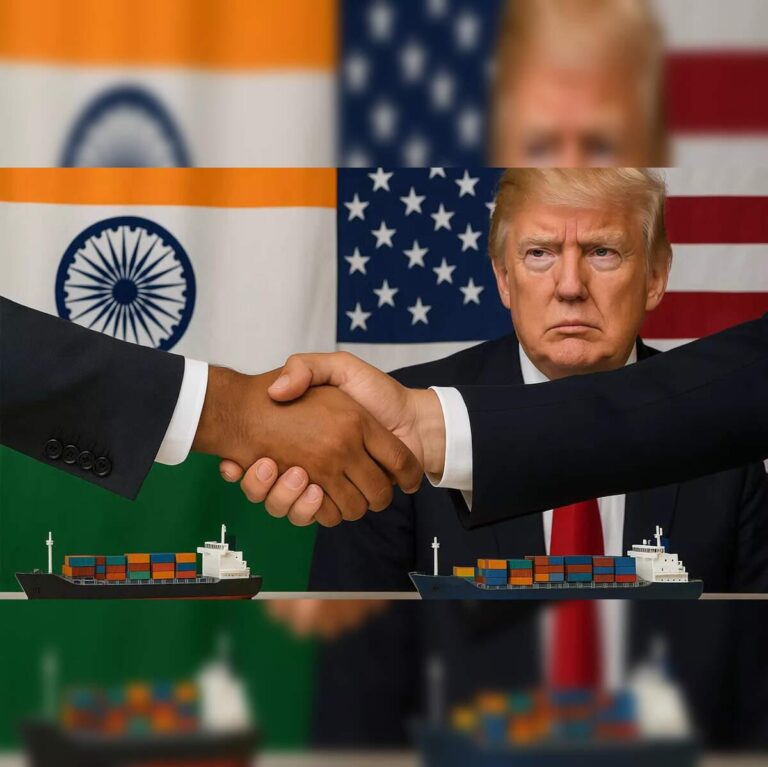In a significant setback to bilateral economic relations, recent India-US trade negotiations have collapsed amid a series of missed signals and unresolved tensions, Reuters reports. The breakdown highlights deep-seated differences over key issues such as market access, tariffs, and regulatory standards, underscoring the challenges both nations face in aligning their trade priorities. As talks faltered, businesses and policymakers on both sides now confront heightened uncertainty, raising questions about the future direction of this critical economic partnership.
Missed Signals Undermine Trust in India US Trade Negotiations
The collapse of the recent trade negotiations between India and the United States was marked by a series of overlooked cues and misinterpreted intentions that deepened the rift between the two economic powerhouses. Despite months of dialogue, key frustrations emerged as both sides failed to align on critical issues such as market access, intellectual property rights, and tariffs. Observers cite a lack of proactive communication and an underestimation of each other’s political and economic red lines as pivotal factors that eroded trust during crucial phases of the talks.
Several missed opportunities to bridge gaps were apparent throughout the talks:
- Unaddressed agricultural export concerns led to escalating tensions over subsidy policies.
- Conflicting views on data localization raised alarms over regulatory transparency and privacy.
- Ambiguous negotiation signals left diplomats uncertain about the realistic scope of concessions.
These unresolved matters contributed to a stalemate, making it increasingly difficult for negotiators to present a united front to their respective governments. The breakdown highlights the necessity for clearer engagement strategies and reinforced trust-building mechanisms in future discussions to avoid repeating missed signals that can derail high-stakes diplomacy.
| Key Issues | Status in Talks | Impact |
|---|---|---|
| Agricultural Subsidies | Stalemate | Increased bilateral tension |
| Data Privacy | Unresolved | Raised trust concerns |
| Market Access | Ambiguous Offers | Hindered progress |
Key Points of Contention That Led to the Break Down
The negotiations faltered primarily due to deep-rooted disagreements over market access and tariff reductions. India sought concessions on agricultural products and pharmaceutical exports, emphasizing the need for protections that would shield its domestic industries. Conversely, the U.S. pushed hard for greater access to its vast consumer market, demanding lower tariffs on industrial goods and technology imports. Both sides accused each other of sending ambiguous signals-India interpreted certain U.S. demands as non-negotiable ultimatums, while U.S. officials viewed India’s responses as evasive or insufficiently committed to reform.
Another significant sticking point was the dispute over intellectual property rights (IPR) enforcement and data localization rules. The U.S. argued for stronger IPR protections to support American tech firms, while India insisted on maintaining flexible policies to nurture its burgeoning digital economy. Below is a summary of the core disagreements that acts as the negotiating impasse:
| Issue | India’s Stance | U.S. Position |
|---|---|---|
| Tariffs on Agricultural Goods | Protectionist measures retained | Demand significant cuts |
| Pharmaceutical Exports | Seek safeguards and subsidies | Push for minimum restrictions |
| IPR Enforcement | Moderate enforcement to boost generics | Strict protection for innovation |
| Data Localization | Local data storage requirements upheld | Advocate for free cross-border flow |
Recommendations for Rebuilding Dialogue and Preventing Future Failures
Restoring trust between India and the US requires a proactive approach anchored in transparent communication and mutual respect. Both sides must commit to regular, candid dialogues that explicitly address potential sticking points before they escalate. Establishing dedicated bilateral working groups-focused on trade disputes, regulatory standards, and market access-can create a continuous feedback loop, helping to identify and resolve misunderstandings early. Furthermore, integrating independent mediators or trade experts into negotiation sessions may provide objective perspectives that prevent misinterpretations and missed signals from derailing progress.
Beyond procedural improvements, fostering cultural and institutional empathy is crucial for sustainable cooperation. Stakeholders should prioritize comprehensive briefings to better understand each other’s domestic pressures and policy imperatives. The following table highlights key strategies to embed these principles in future talks, emphasizing measurable actions:
| Strategy | Action Point | Expected Outcome |
|---|---|---|
| Regular Communication | Monthly bilateral consultations | Early detection of disagreements |
| Third-Party Mediation | Engage neutral trade experts | Balanced solutions and reduced bias |
| Cultural Briefings | Intergovernmental policy workshops | Deeper mutual understanding |
| Transparency Measures | Public disclosure of negotiation agendas | Increased accountability |
Closing Remarks
As negotiations between India and the United States come to an abrupt halt, the failure to decode critical signals from both sides has underscored the fragility of diplomatic trade dialogues. Analysts warn that missed opportunities and miscommunications may have lasting repercussions on bilateral economic ties, complicating future efforts to bridge gaps. With major issues still unresolved, both nations face the challenge of rebuilding trust and finding common ground before the next round of talks can proceed.




